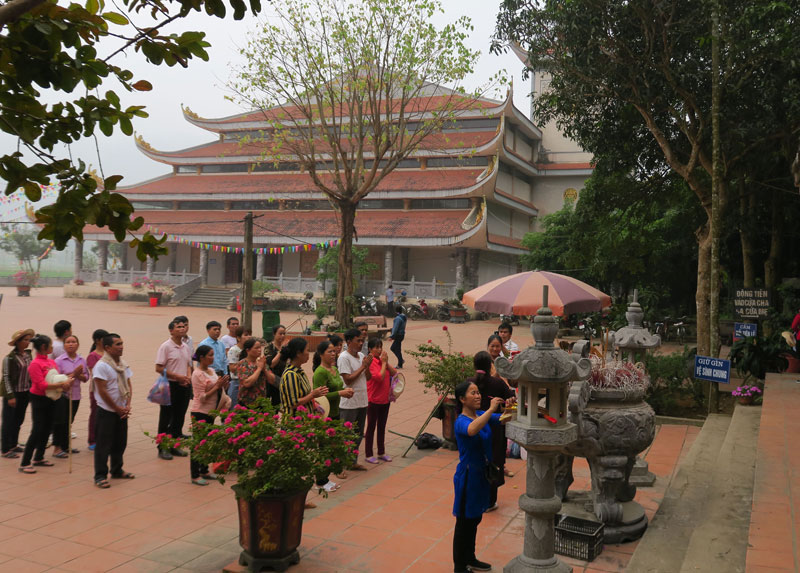


In the first quarter of 2019, the district welcomed 450,000 arrivals, up 12.5 percent year-on-year and equal to 60 percent of the target set for the whole year by the province. The Tien pagoda relic site in Phu Lao commune alone attracted about 150,000 visitors.
With this growth, Lac Thuy has contributed to boosting the industry’s development of the region.
 Tourists visit Tien pagoda in Phu
Lao commune.
Tourists visit Tien pagoda in Phu
Lao commune.
Blessed by the nature, Lac Thuy owns a lot of beautiful rivers, mountains and caves. It also has the most relic and tourism sites in the province.
Among the 85 listed relic sites, six have been recognized as national relic sites by the Ministry of Culture, Sports and Tourism, including Chi Ne money minting factory revolutionary historical site, Dong Thot cave, Tien cave, Tien pagoda in Phu Lao commune, Luon cave and Niem mountain cave in Phu Thanh commune. The eight provincial cultural and historical relic sites are An Linh pagoda in Yen Bong commune, Doi village communal house, Vai temple, Voi village communal house in Thanh Nong commune, Nieng communal in Hung Thi commune, Chua village communal in Phu Thanh commune, Rem temple in Chi Ne town, and Niem temple in Phu Thanh commune.
To make tourism a spearhead economic sector, Lac Thuy district authorities have focused on investing in and promoting investment in Tien cave in Phu Lao commune, Dong Tam lake eco-tourism site, Luon cave, Minh Ngoc eco-tourism site and Da Bac village eco-tourism site.
They have worked to diversify services, while encouraging economic sectors inside and outside the district to participate in developing tourism types with priority given to cultural tourism, eco-tourism and spiritual tourism.
Attention has been paid to increasing the quality of tourism products and upgrading infrastructure at key sites.
Lac Thuy has also offered preferential policies on investment following legal regulations and the province’s investment encouragement policy on tourism development. Each year, the district spends a large amount of money on building infrastructure at tourism sites and social welfare facilities, and always encourages organisations and individuals to invest in tourism.
It has also focused on increasing the number of competent officials who can help carry out State management over trade, tourism and training of tour guides; intensifying tourism promotion and popularisation to raise public awareness of tourism; and coordinating with surrounding provinces in developing tourism services./.